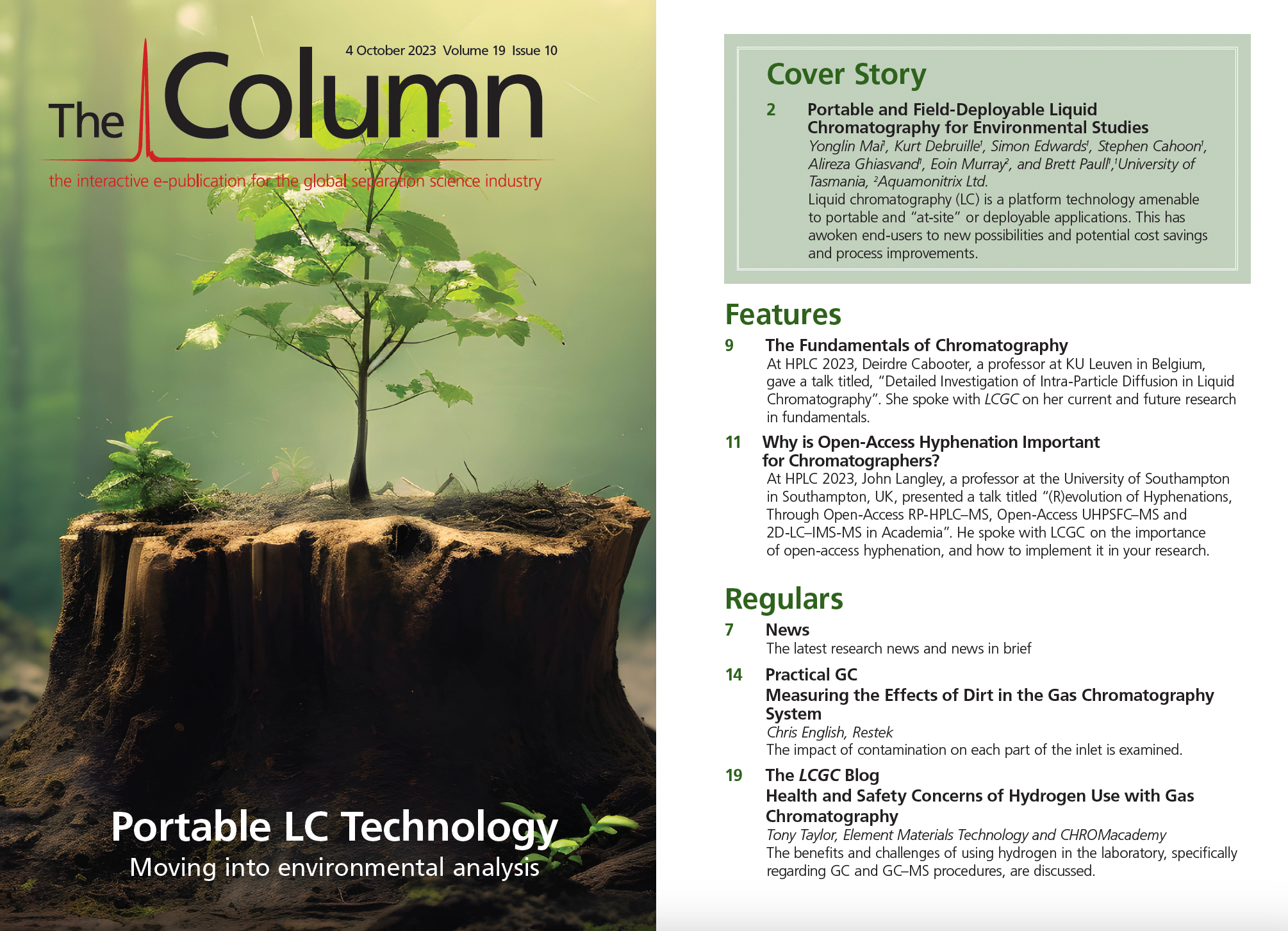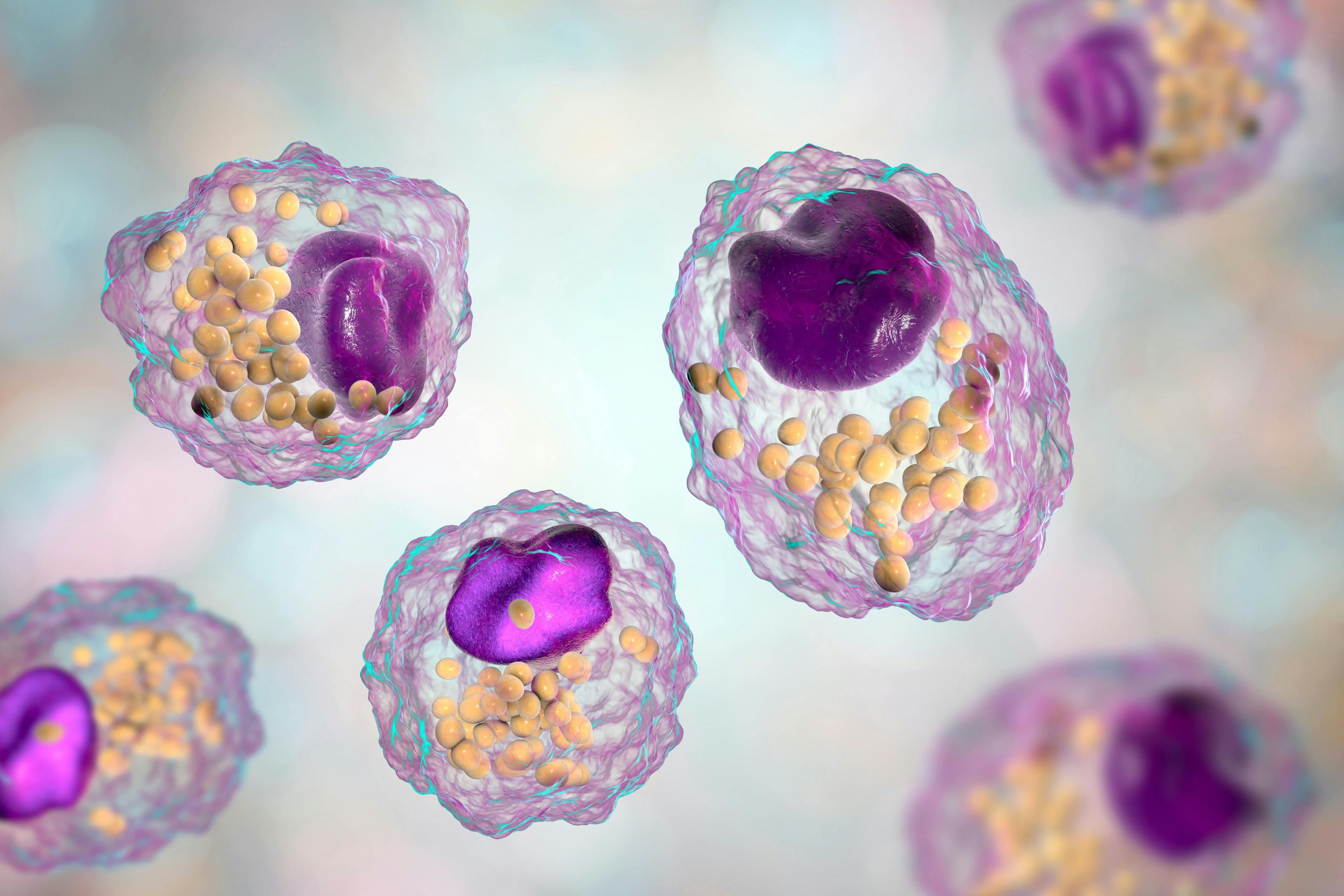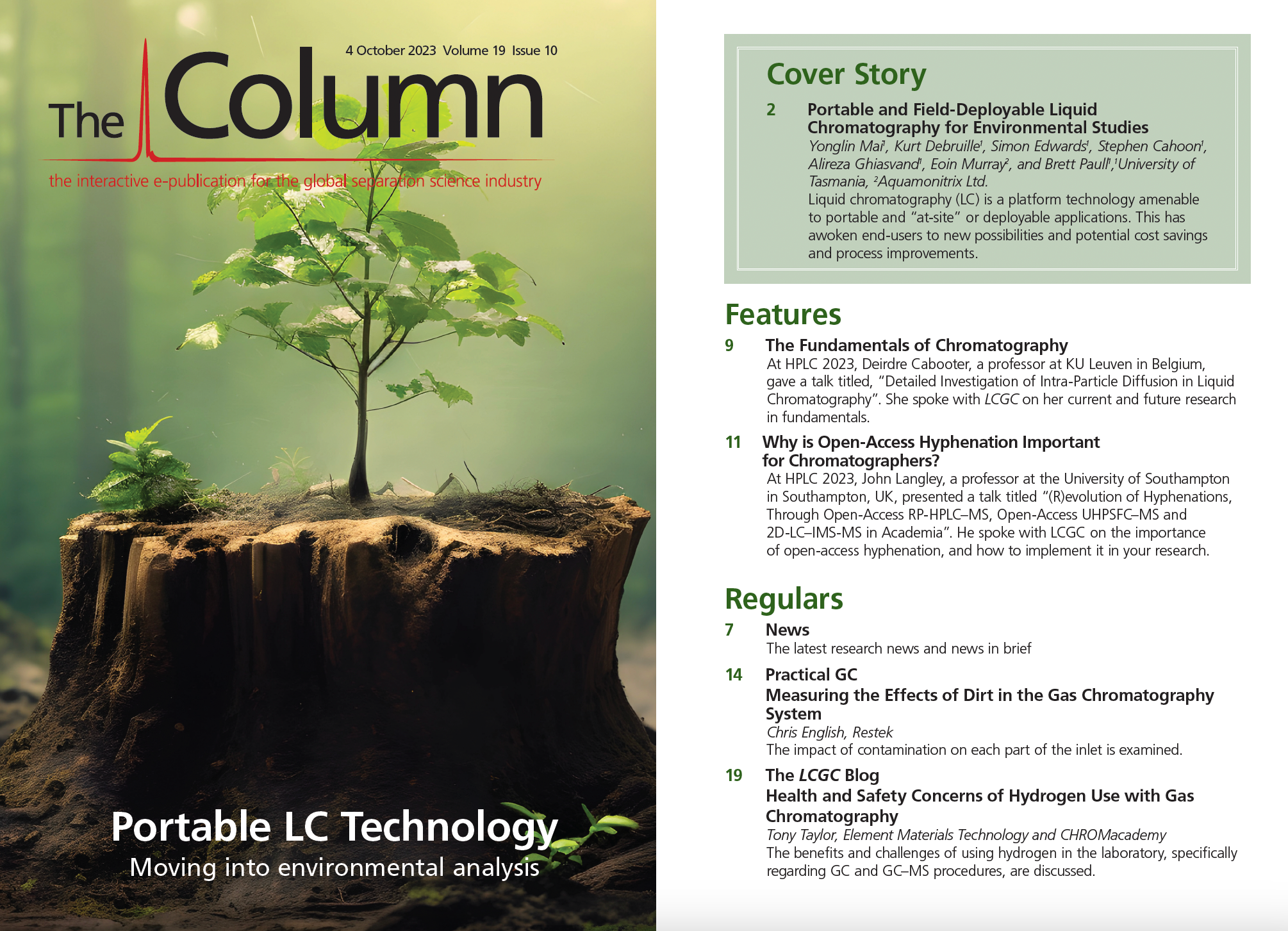Why is Open-Access Hyphenation Important for Chromatographers?
At HPLC 2023, John Langley, a professor at the University of Southampton in Southampton, UK, presented a talk titled “(R)evolution of Hyphenations, Through Open-Access RP-HPLC–MS, Open-Access UHPSFC–MS and 2D -LC–IMS-MS in Academia”. He spoke with LCGC on the importance of open-access hyphenation, and how to implement it in your research.
Q. What is open-access hyphenation?
A: It’s where we bring together the need of the chemist or the user with the analyst. We have the hyphenation, that is, the chromatography that deals with separations of mixtures and the mass spectrometer for the determination of the answer, and then tuning the solution to the question in hand. That means we might want a reversed -phase hyphenation technique, or we might want gas phase chromatography, or we might need supercritical fluid chromatography (SFC) as the solution. It’s all about the chemistry of the user samples.
Q. Why is open-access hyphenation important in your laboratory?
A: Our lab wouldn’t run without open‑access hyphenation. To get through the number of samples, it’s just not feasible to do that with one person operating an instrument, or even 20 or 30 people operating the instrument as a power user. The open‑access approach means that users log samples on remotely. They can then come into the lab, scan the barcode, and put the sample into the autosampler. The instrumentation then switches on, acquires and processes the data, returning it in typically 5 min, and it just does that all day long. Without that solution, we couldn’t get through the number of samples, people couldn’t reaction monitor, we just couldn’t work. For me it’s a critical piece of technology. I’m surprised that more people don’t use it.
Q. What are the benefits of open-access reversed-phase ultrahigh-pressure liquid chromatography–mass spectrometry (RP-UHPLC–MS) and open-access ultrahigh-pressure supercritical fluid chromatography (UHPSFC)–MS (1)?
A: The move to sub-2-µm particle size has allowed us to work with chromatography in a much faster timescale, meaning we’ve got an increased peak capacity. By using reversed-phase or SFC we can look at different types of molecules with different solutions, all benefitting from sub-2-µm particle size, which means we can do faster chromatography with better resolution, so we can work with more complex systems. We need the different types of chromatography to address different classes of chemicals. We have some materials that just are not compatible with reversed phase, so they go to an SFC system. We have some materials that just do not retain using reversed-phase C18 chromatography solutions that again require SFC. It’s all about having the right tool for the right question.
Q. What are the benefits of two-dimensional (2D)-LC–ion mobility separation (IMS)-MS?
A: When thinking about the move to 2D and why we want to use 2D chromatography, we need the increased peak capacity to deal with samples that we cannot separate with one-dimensional (1D) chromatography. This is not an open-access solution however; it is a power user or multiuser solution, but it’s not on the high-throughput mode of an open-access model. We need this because we have challenges facing us to understand complex materials at the molecular level in the petrochemical world and the pharmaceutical world, and we need enhanced chromatography solutions to help us work in those spaces. The new instrumentation and the 2D approaches allow us to achieve better levels of quantitation and detection, which are going to be critical when we start looking at low levels of polyfluorinated contaminants, for example.
Q. Are you planning to evolve open-access hyphenation further?
A: The evolution of open-access solutions must keep going. We’ve evolved in the 28 years we’ve been working in this space, and we’re always looking for ways where we can change. We’ve spoken recently about how sub-2-µm particles have changed the world. We’re now in the stages of implementing an open-access non-chromatography solution using the small benchtop atmospheric solids analysis probe-mass spectrometry (ASAP-MS) system that Waters has within our open access suite, so that users can come to the lab and get their data quickly. We’ll continue to look at the right solution and change what we do open-access-wise. If we stand still, we go backwards, so we’ve always got to look forwards.
Q. Do you have advice for analysts who want to implement open-access hyphenation?
A: The first thing I would do if I was implementing open-access hyphenation now is talk to the people that have done it, talk to the guys in industry, talk to people like us because we’ve learned a lot and we know what doesn’t work. Education is a huge part of it. Once you train your user base and get them into the right mindset, a lot of the problems go away. If you’re in an environment similar to ours where we have different solutions, then we educate the users about the right solution, and we use the idea that the molecule is encoded to the correct chromatography, or the correct ionization technique, or both.
Reference
(1) Langley, G. J. (R)Evolution of Hyphenations, Through Open Access RP-HPLC–MS, Open Access UHPSFC–MS and 2D-LC–IMS-MS in Academia. Presented at: HPLC 2023. June 18–22, 2023. Düsseldorf, Germany. KN37.
About the Interviewee
John Langley is a professor at the University of Southampton, UK. Direct correspondence to: g.j.langley@soton.ac.uk


New Method Explored for the Detection of CECs in Crops Irrigated with Contaminated Water
April 30th 2025This new study presents a validated QuEChERS–LC-MS/MS method for detecting eight persistent, mobile, and toxic substances in escarole, tomatoes, and tomato leaves irrigated with contaminated water.
Accelerating Monoclonal Antibody Quality Control: The Role of LC–MS in Upstream Bioprocessing
This study highlights the promising potential of LC–MS as a powerful tool for mAb quality control within the context of upstream processing.
University of Tasmania Researchers Explore Haloacetic Acid Determiniation in Water with capLC–MS
April 29th 2025Haloacetic acid detection has become important when analyzing drinking and swimming pool water. University of Tasmania researchers have begun applying capillary liquid chromatography as a means of detecting these substances.

.png&w=3840&q=75)

.png&w=3840&q=75)



.png&w=3840&q=75)



.png&w=3840&q=75)










